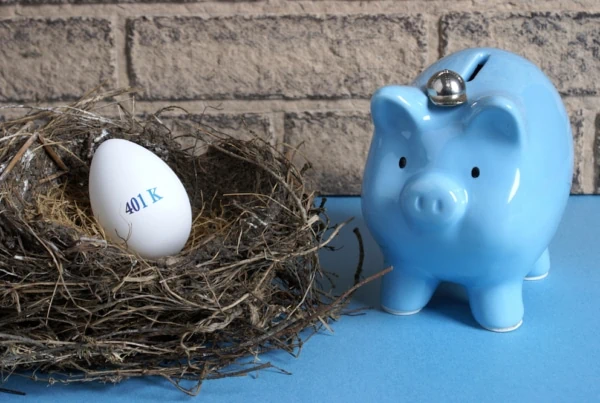A constant theme you’ll read about as you ingest retirement information is the idea that you’ll transition from “wealth accumulation” to “wealth preservation.” That’s just another way of saying that, as you age, your investments will decreasingly be focused on building your savings and increasingly designed to ensure your savings don’t suddenly collapse.
But that doesn’t mean retirees stop building their wealth entirely.
Retirees, especially during their early post-career years, still need to allocate some money toward growing. Realistically, there’s no way of knowing exactly when you’ll no longer need your retirement money, so you shouldn’t burn your nest egg down to the last cent—you’ll want to ensure your investments are replenishing at least part of what you’re withdrawing.
Here, then, are some important mistakes to avoid in your retirement wealth-building efforts. While some of these errors have to do with how you invest and collect other sources of income, others deal with preserving as much of your savings as possible to give that money more time to remain invested.
Disclaimer: This article does not constitute individualized financial advice. The information appears for your consideration, not as a personalized recommendation. Act at your own discretion.
How to Not Waste Your Wealth

You plant a seed. You water it. You give it sunlight. You add some fertilizer and feed. If you do all that right, it grows into a plant. But once it grows to its optimal height, you don’t just let it wither—you continue to maintain it to ensure it stays strong and tall.
You can think of your retirement savings in the same way.
When you collect your gold watch and walk out of the office for good, you don’t just cash out your retirement funds and call it a day. You withdraw what you need over time and let whatever amount you can continue to appreciate. These tips will help you maximize that remaining growth potential and continue building some level of wealth as you age.
Do you want to get serious about saving and planning for retirement? Sign up for Retire With Riley, Young and the Invested’s free retirement planning newsletter.
1. Becoming Too Financially Conservative Too Quickly

A common retiree money mistake is keeping too much of their savings in cash and cash equivalents (think money markets, CDs, and T-bills).
Cash is the most harmful place to over-stash your money, as it earns absolutely no interest and thus will certainly lose value to inflation. Only keep in cash what you’ll certainly need in the short term for expenses.
Cash equivalents can at least provide some return in the form of interest, helping to partially or even completely offset inflation. They’re frequently part of a retirement savings equation, providing both modest upside and needed liquidity. But again, depending on your expected longevity and funding goals, it’s possible that allocating too much money to cash equivalents will starve you of the growth necessary to make your nest egg last.
There’s no single retirement portfolio that makes sense for every single person; retirement investment strategies should match a person’s age, risk tolerance, and goals. Rather than “guesstimating” your needs and slipping into an overly conservative portfolio, consult a financial advisor who can help you determine an appropriate allocation of growth and income investments.
Want to talk more about your financial goals or concerns? Our services include comprehensive financial planning, investment management, estate planning, taxes, and more! Schedule a call with Riley to discuss what you need, and what we can do for you.
2. Claiming Social Security Too Early

Americans can begin collecting Social Security retirement benefits as early as age 62. However, if you start collecting it ASAP, your monthly benefit will be permanently reduced.
To receive your full Social Security check, you must wait until full retirement age (FRA), which is based on your birth year:
- Born between 1943 to 1954: 66
- Born in 1955: 66 and 2 months
- Born in 1956: 66 and 4 months
- Born in 1957: 66 and 6 months
- Born in 1958: 66 and 8 months
- Born in 1959: 66 and 10 months
- Born in 1960 or later: 67
However, if you’re trying to time Social Security to get your maximum benefit, you actually need to wait until after FRA to begin collecting a check. That’s because delaying Social Security and working longer can earn you a higher benefit—up to a point, anyways. Every American will max out their potential benefits by age 70. “Delayed retirement credits” stop accumulating once you reach age 70; at that point, you’ll have reached your benefit cap, so delaying won’t do anything more to improve the size of your Social Security checks.
For some people—say, those with a clear financial need, or those who don’t expect to have a long life in retirement—collecting benefits at FRA or even sooner is the wisest course of action. But if you want the biggest Social Security check possible, the biggest mistake you can make is starting your benefits too early.
Related: How Much Social Security Will I Receive?
3. Underestimating Health Care Costs

One of the biggest impediments to wealth building is, oddly enough, not understanding your retirement expenses well enough. Why?
A very broad example: Let’s say you believed you only needed to save $10,000 by next year, and you went and spent another $10,000 you could have saved … only to find out you miscalculated and actually need to spend $20,000 next year.
Now apply that to health care. Misunderstanding your health care needs can actually hit you on three fronts: 1.) Not knowing how much you’ll need to spend in a “regular” year (one where you’re largely just paying for Medicare premiums, medicine, doctor’s visits, etc.), 2.) not having enough saved for catastrophic one-off medical events, and 3.) obtaining coverage that leaves you more susceptible to absorbing larger costs.
Among the things you’ll want to have a good grasp on to project more accurate health care costs in retirement:
- The different types of Medicare and what they cover.
- What you can expect to pay for Medicare and other insurance premiums.
- What you can expect to pay for deductibles, co-insurance, and out-of-pocket costs.
- Over-the-counter expenses.
- Long-term care types and their costs.
If you haven’t thought about these issues much, you’ll want to check out our guide to health care costs in retirement.
Related: Medicare FAQs: Your Questions Answered
4. Paying Too Much in Taxes

Yes, the IRS will likely ask for less in taxes during retirement than it did during your working years. But even then, if you don’t have a tax strategy during your post-career years, you could be needlessly giving up more of your hard-earned wealth than necessary.
Among the tax issues you’ll need to confront?
- Social Security taxes: Social Security can indeed be taxed. A little more than half of Americans pay federal taxes on at least a portion of their benefits. A handful of states tax Social Security benefits, too.
- Taxes on retirement income: Depending on the type of account you’re withdrawing from, your retirement savings could very well be taxed. If you invest in different types of accounts—say, tax-deferred accounts such as 401(k)s as well as tax-exempt accounts such as Roth individual retirement accounts (IRAs)—you can plan your withdrawals in a way that minimizes what you owe. Tax strategy is also key in ensuring that required minimum distributions (RMDs) aren’t more of a burden than they need to be.
- Tax breaks: You’ll also want to be aware of deductions and credits once you retire. For instance, depending on your situation, you might save more by taking the standard deduction, or you might save more by itemizing. Recently, the passage of the budget reconciliation bill added on a new Senior Deduction to people age 65 and older.
The less you spend in taxes, the more money you have left to use or continue growing.
Related: 10 Common Myths About Taxes in Retirement
5. Taking More Than You Need in RMDs

A required minimum distribution is a baseline amount of money you must withdraw from certain retirements each year once you reach a certain age.
While they’re not an issue for people who would have withdrawn that level of money regardless, some people wouldn’t—and would prefer to reduce their RMDs. After all, any money you withdraw can no longer grow within your account. And distributions from any tax-deferred retirement account will be taxed at your regular income tax rate, which means the more you pull out, the more you’ll pay up in taxes.
A few tax strategies can help you reduce your RMDs. Here are a few examples:
- Qualified charitable distributions (QCDs): Anyone who is at least age 70½ can make QCDs directly from an IRA to an eligible charity and omit the amount from their gross income for the year (up to a certain limit that changes each year). Well, once you turn 73, QCDs can also count against your RMDs.
- Qualified longevity annuity contracts (QLACs): This type of deferred income annuity (an insurance product that provides income payments over time) allows you to delay RMDs on assets used to purchase a QLAC until you’re 85 years old.
- Roth conversions: Retirees may consider a Roth conversion, in which funds saved in a tax-deferred account, like a traditional 401(k) or IRA, are put into a Roth IRA. This involves an upfront tax hit and has other drawbacks—including income limits, which you can sidestep via a backdoor Roth conversion—but Roth accounts aren’t subject to RMDs, and Roth withdrawals generally aren’t taxed as long as you meet age and other requirements.
Make Young and the Invested your preferred news source on Google
Simply go to your preferences page and select the ✓ box for Young and the Invested. Once you’ve made this update, you’ll see Young and the Invested show up more often in Google’s “Top Stories” feed, as well as in a dedicated “From Your Sources” section on Google’s search results page.
6. Not Re-Evaluating Your Housing Situation

All assets aren’t built equally. Many Americans find that out the hard way in retirement when they realize they’re house-rich but cash-poor.
To be clear: Many Baby Boomers are reluctant to downsize their homes. It’s completely normal. And if your biggest priority is remaining in a house you love, that’s what you should do.
But if your goal is to maximize your financial resources, you’ll at least want to consider the benefits of moving in retirement—specifically by selling your current home and purchasing a smaller one. In addition to what usually will amount to a sudden influx of cash, you’ll likely also reduce future expenditures such as property taxes and maintenance costs. And depending on where you move, you might benefit from differences in the local cost of living.
Related: Downsizing in Retirement? 10 Tips to Follow
7. Spending Too Much on Children + Grandchildren

Even if you’ve built a nest egg the size of Mount Everest, that mountain can quickly dwindle to a molehill if you spend too much money on others. You don’t want to be a Scrooge, of course. But financially supporting adult children can come at the cost of the retirement you earned.
It’s important to remember that while adult and young children alike have time to build financial resources, you don’t—what you spend in retirement likely isn’t coming back. It certainly can’t be used to continue growing your savings until you need it.
If you’re trying to prioritize your wealth, then, you need to be mindful of what you’re spending on your children and grandchildren.







![Should You Max Out Your 401(k) Each Year? [Yes...and No] 21 should you max out your 401k each year or invest elsewhere](https://youngandtheinvested.com/wp-content/uploads/should-you-max-out-your-401k-each-year-or-invest-elsewhere-600x403.webp)

